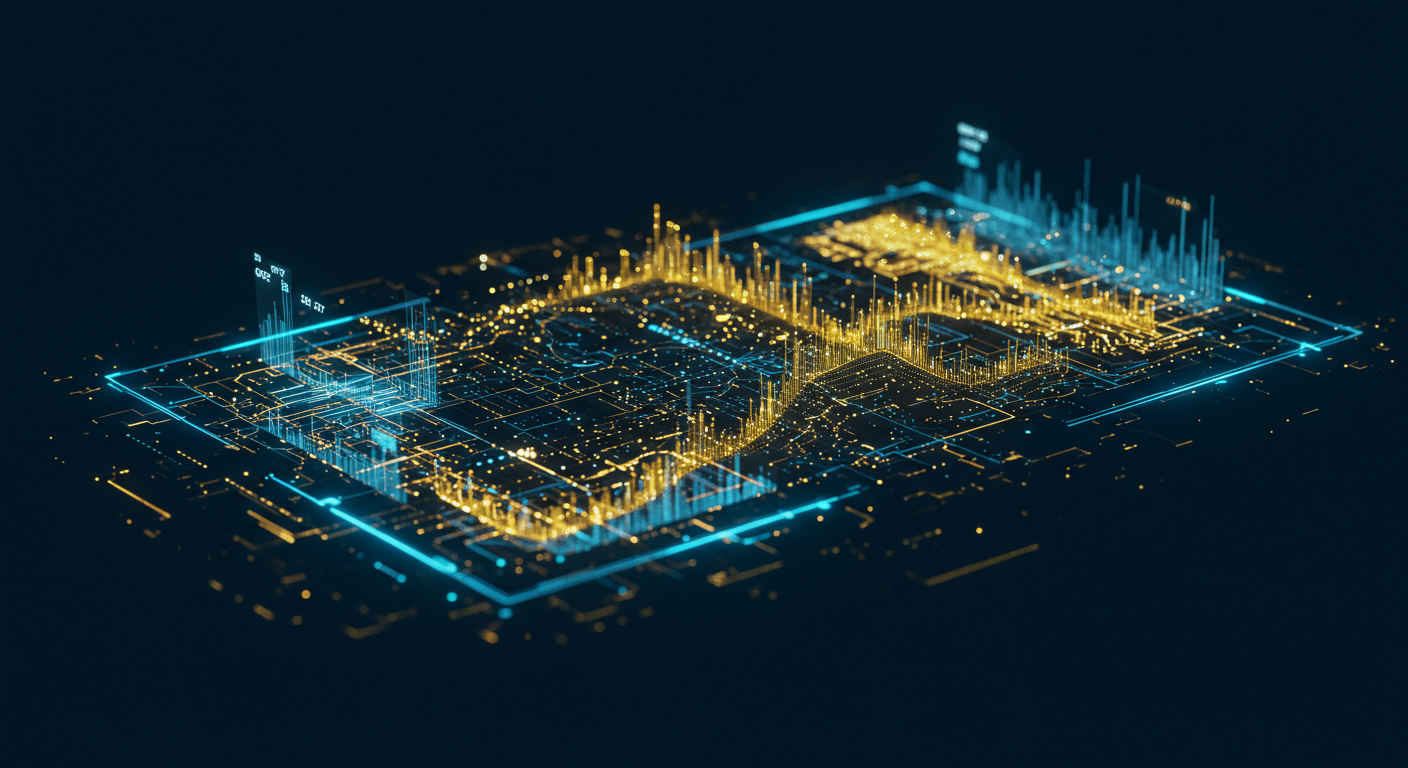GPT-5's Reasoning Revolution: Analyzing ChatGPT's 700M Users and the Future of AI

ChatGPT's meteoric rise to 700 million users demonstrates the world's insatiable appetite for accessible AI.
ChatGPT's Meteoric Rise: Analyzing the 700 Million User Milestone
The rapid adoption of ChatGPT is nothing short of phenomenal. Reaching 700 million weekly active users is a testament to its versatility, accessibility, and the increasing integration of AI into daily life. ChatGPT offers a wide range of uses, from writing & translation and code assistance to simply answering questions, making it a tool used worldwide.
How does ChatGPT's growth compare to other platforms?
Consider this:- Facebook: Took roughly 4 years to reach a similar milestone.
- TikTok: Achieved rapid growth but still took longer than ChatGPT.
- ChatGPT: Exploded onto the scene and amassed a massive user base in a fraction of the time.
Who exactly are these 700 million users?
Understanding the user demographics helps illustrate AI's broad appeal:- Professionals: Utilizing ChatGPT for productivity & collaboration and automating tasks.
- Content Creators: Leveraging AI for generating ideas and streamlining the creative process. Tools such as CopyAI help to generate content quickly.
- Students: Employing it for research, learning, and studying. See the tools for students.
Implications for the future of AI
This massive user base has several implications:- Increased AI Familiarity: More people using AI means greater comfort and acceptance.
- Data for Improvement: A larger user base generates more data, leading to better AI models.
- Ethical Considerations: With increased usage, responsible AI development becomes even more crucial.
In summary, the analysis of ChatGPT's weekly active users highlights the power of accessible AI and its potential to transform various aspects of modern life. To see the best AI tools on the market, check out the top 100.
Decoding GPT-5: What to Expect from the Next Generation AI
GPT-4 was impressive, but we're on the cusp of something even more revolutionary: GPT-5, poised to redefine what's possible with AI.
Enhanced Reasoning and Problem-Solving
Expect a leap beyond pattern recognition. GPT-5 will likely demonstrate significantly enhanced reasoning capabilities. Think less rote memorization and more genuine problem-solving.
Imagine an AI that can not just write a legal document, but understand the nuances of the law and formulate strategic arguments. That's the level of reasoning we're aiming for.
GPT-5 may also excel in areas where current models struggle such as:
- Abstract thought
- Common-sense understanding
- Complex planning
Architectural Improvements and Training
The key isn't just more data. Architectural advancements are crucial. We might see:
- Mixture of Experts (MoE) architectures: allowing specialized models to handle specific tasks.
- Reinforcement Learning from Human Feedback (RLHF) refinements: ensuring alignment with human values and intent.
- Multi-modal training: GPT-5 can interpret text, images, audio and video, just as humans do.
Industry Impact and Ethical Considerations
The impact of GPT-5 will be felt across nearly every sector:
- Healthcare: Assisting with diagnosis, personalized treatment plans, and drug discovery.
- Finance: Automating risk assessment, fraud detection, and personalized financial advice.
- Education: Creating personalized learning experiences and providing instant feedback to students.
- AI Art: We'll likely be amazed by the progress in image generation AI tools.
In short, GPT-5 represents a monumental leap forward, promising to unlock unprecedented potential while demanding careful ethical consideration. The AI revolution continues, and this next chapter promises to be nothing short of transformative, and you can find related AI news.
GPT-5 isn't just the next iteration; it's a leap toward artificial understanding.
Reasoning Superpowers: How GPT-5 Aims to Revolutionize AI Problem-Solving
Reasoning isn't just about spitting out facts; it's about connecting the dots, drawing conclusions, and adapting to new information – skills that are fundamental to any advanced AI. GPT-5, still shrouded in some mystery, is anticipated to make significant strides in this area, moving beyond simple pattern recognition to genuine logical inference. This shift would unlock a new era of AI applications, capable of solving complex problems with minimal human oversight.
The Architectural Edge
Think of current AI like a highly skilled parrot – it can mimic human language flawlessly, but lacks true comprehension. GPT-5 aims to change this.
Rumors suggest architectural improvements centered on enhanced attention mechanisms and a better understanding of context. This would allow the model to:
- Process information more deeply: Not just superficially scanning text, but truly understanding the relationships between concepts.
- Identify subtle nuances: Catching sarcasm, detecting biases, and adapting to different communication styles.
- Generate more original and creative content: Moving beyond simple paraphrasing to true innovation.
Real-World Applications
Imagine an AI capable of:- Diagnosing medical conditions with higher accuracy by analyzing complex patient histories and research papers.
- Developing new scientific hypotheses by identifying patterns and connections in vast datasets.
- Creating personalized learning experiences that adapt to a student's individual needs and learning style. The potential applications for AI in education are staggering.
Compared to Existing Models
Existing AI models like ChatGPT are impressive, but often struggle with abstract reasoning or tasks requiring common sense. GPT-5 aims to close this gap, approaching human-level reasoning in specific domains. It's about making AI a problem-solving partner, not just a sophisticated tool.In summary, GPT-5's focus on enhanced reasoning capabilities promises to transform the AI landscape, opening doors to more complex and impactful applications. Ready to explore AI's current capabilities? Let's dive into some AI Fundamentals and see how far we've already come.
Unleashing GPT-5 with multimodal AI will be like upgrading from black and white television to full-sensory virtual reality.
Beyond Text: Exploring GPT-5's Potential Multimodal Capabilities

GPT-5 isn't just about words; think symphonies, paintings, and immersive experiences. We're talking about true multimodal AI – the ability to process and generate various data types including images, audio, and video. Consider the possibilities!
Creative Renaissance: Imagine Design AI Tools that create photorealistic images and* compose accompanying soundtracks in seconds. Or Video Generation platforms crafting entire short films from a simple prompt.
- Data Analysis Elevated: Multimodal AI can correlate seemingly unrelated datasets. For instance, analyzing satellite imagery alongside social media sentiment to predict crop yields or identify emerging humanitarian crises.
- Human-Computer Harmony: A truly intuitive interface would understand not just your words but also your gestures, facial expressions, and tone of voice, creating a far more natural and effective collaboration.
Industry-Specific Applications
Let's get practical:
- Healthcare: Analyzing medical images (X-rays, MRIs) alongside patient history for faster and more accurate diagnoses. See also the intersection with AI tools for Healthcare Providers.
- Education: Generating custom learning experiences that adapt to a student's learning style using a combination of text, video, and interactive simulations – tailored by AI tools for Educators.
Challenges and Ethical Considerations
Of course, this leap introduces hurdles. Technical challenges include synchronizing different data streams, ensuring consistent quality, and managing computational demands. Ethical concerns revolve around deepfakes, bias amplification, and the potential for misuse in surveillance and manipulation. We must proceed cautiously, guided by principles of fairness, transparency, and accountability, lest we open Pandora's box. Learning the AI Fundamentals can help prepare us.
GPT-5's multimodal capabilities promise a revolution across various fields, pushing the boundaries of AI and human interaction, but we must proactively address both the technical and ethical implications. The future is more than just text; it's a symphony of data waiting to be conducted.
ChatGPT and GPT-5: A Synergistic Future or Looming Competition?
The advent of GPT-5 is not just another iteration; it's a potential paradigm shift that may reshape the role of existing AI tools.
ChatGPT's Reign: A Foundation Built on Versatility
ChatGPT, with its massive 700 million users, has become the go-to conversational AI, prized for its accessibility and broad utility. It excels at:
- Content Generation: Crafting everything from emails to poems.
- Information Retrieval: Quickly answering queries on a vast array of topics.
- Customer Service: Providing instant, 24/7 support.
GPT-5's Promise: Reasoning and Problem-Solving Power
GPT-5 promises advanced reasoning capabilities that go beyond ChatGPT’s current capacity. Imagine an AI that doesn't just provide answers but understands the problem and crafts nuanced solutions. This could mean:
- Complex Problem Solving: Tackling intricate business challenges.
- Advanced Data Analysis: Uncovering hidden patterns and insights.
- Creative Innovation: Assisting in developing groundbreaking inventions.
Integration or Replacement? Charting the Future
The million-dollar question: will GPT-5 integrate with ChatGPT, becoming its brain, or will it supersede it?
- Integration: Think of GPT-5 as an upgrade – supercharging ChatGPT with enhanced reasoning for more sophisticated tasks. This could provide users with a seamless experience, scaling from simple tasks to intricate projects.
- Replacement: GPT-5 could emerge as a standalone, premium service, leaving ChatGPT for more basic needs. This depends on cost, accessibility, and ease of use.
Navigating the Ethical Landscape: Ensuring Responsible Development and Deployment of GPT-5
The breathtaking capabilities of GPT-5 demand a parallel focus: how do we ensure its development and deployment align with human values and societal well-being?
Addressing Key Ethical Concerns
AI ethics is no longer a theoretical exercise; it's a practical imperative. Powerful models like GPT-5 present real-world challenges that need proactive solutions.
- Bias: AI models are trained on data, and if that data reflects existing societal biases, the AI will amplify them. For instance, imagine a Design AI Tools trained primarily on Western art; it may struggle with diverse cultural aesthetics.
- Misuse: The potential for malicious applications, from generating disinformation to creating sophisticated scams, is a significant concern. Think about how easily a convincing (but fake) news article could be generated using a tool like ChatGPT. ChatGPT is a versatile conversational AI tool known for answering questions, writing copy and much more.
- Job Displacement: While AI can create new opportunities, it also threatens existing jobs, especially in areas like content creation and customer service.
Embracing Transparency and Accountability
The path forward lies in embracing transparency and accountability at every stage of AI development.
- Transparency: Openly documenting the data used to train AI models and the algorithms that govern their behavior is crucial.
- Accountability: Establishing clear lines of responsibility for the actions of AI systems is essential. Who is accountable when an autonomous vehicle causes an accident?
- Fairness: Actively working to mitigate bias and ensure that AI systems treat all individuals and groups equitably. This includes rigorous testing and ongoing monitoring of AI performance.
Charting a Course with Regulation and Ethics

"The ethical considerations surrounding AI are not just academic; they are fundamental to ensuring that this powerful technology benefits humanity as a whole."
Regulatory frameworks and ethical guidelines are essential for navigating the complexities of GPT-5 and similar technologies. This involves:
- Collaboration: AI researchers, developers, policymakers, and ethicists must work together to develop responsible AI practices.
- Standards: Establishing industry-wide standards for AI development and deployment, covering aspects like data privacy, security, and fairness.
- Oversight: Creating regulatory bodies to oversee AI development and ensure compliance with ethical guidelines.
GPT-5 promises not just bigger models, but smarter ones, raising the stakes in the AI innovation game.
The AI Arms Race: How GPT-5 Stacks Up Against the Competition
The buzz around GPT-5 is deafening, but how does it truly measure up against heavyweights like Google's Gemini and Anthropic's Claude? It's less about raw power and more about finesse. While previous models have focused on scaling parameters, GPT-5 is rumored to bring a quantum leap in reasoning capabilities.
Imagine a chess grandmaster versus a supercomputer; both are powerful, but one excels at strategic thinking, the other at brute-force calculation. GPT-5 aims for that strategic advantage.
Here's a quick look at the landscape:
- GPT-5: Rumored advancements in logical reasoning, complex problem-solving, and contextual understanding.
- Google Gemini: Emphasis on multimodality – seamlessly integrating text, images, audio, and video.
- Anthropic Claude: Focus on safety and alignment, designed for more ethical and responsible AI interactions. Anthropic Claude is known for its strength in processing lengthy documents and engaging in extended conversations.
AI Architectures and Training Methodologies: A Peek Under the Hood
The competitive edge isn't just about data; it's about how that data is processed. Different AI architectures and training methodologies yield vastly different results.
- Transformers (GPT family): excel at processing sequential data, ideal for language tasks.
- Mixture of Experts (likely in Gemini): combines multiple specialized models for broader expertise.
- Constitutional AI (Anthropic): trains AI using a set of principles, prioritizing safety.
Open Source: A Wild Card
While proprietary models dominate headlines, open-source AI initiatives are gaining traction. These projects democratize access to AI technology, fostering innovation outside corporate labs. This could potentially disrupt the existing power dynamics. For example, there are many AI tools for Software Developers that are open-source.
The AI landscape is a dynamic battlefield, with GPT-5 poised to redefine the rules of engagement; the focus is shifting from size to smarts, and the implications for innovation are profound. To stay ahead, keep exploring the latest AI tools.
Keywords
ChatGPT, GPT-5, AI reasoning, Artificial Intelligence, Large Language Models, LLM, AI adoption, Generative AI, AI advancements, Future of AI, ChatGPT user growth, GPT-5 capabilities
Hashtags
#ChatGPT #GPT5 #AIRevolution #ArtificialIntelligence #AINews
Recommended AI tools
ChatGPT
Conversational AI
AI research, productivity, and conversation—smarter thinking, deeper insights.
Sora
Video Generation
Create stunning, realistic videos and audio from text, images, or video—remix and collaborate with Sora, OpenAI’s advanced generative video app.
Google Gemini
Conversational AI
Your everyday Google AI assistant for creativity, research, and productivity
Perplexity
Search & Discovery
Clear answers from reliable sources, powered by AI.
DeepSeek
Conversational AI
Efficient open-weight AI models for advanced reasoning and research
Freepik AI Image Generator
Image Generation
Generate on-brand AI images from text, sketches, or photos—fast, realistic, and ready for commercial use.
About the Author

Written by
Dr. William Bobos
Dr. William Bobos (known as 'Dr. Bob') is a long-time AI expert focused on practical evaluations of AI tools and frameworks. He frequently tests new releases, reads academic papers, and tracks industry news to translate breakthroughs into real-world use. At Best AI Tools, he curates clear, actionable insights for builders, researchers, and decision-makers.
More from Dr.

